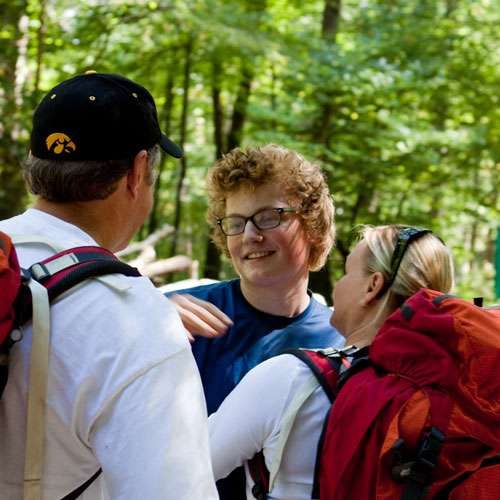If you have ever experienced bullying, you know that it is not something you’d want others to go through. Bullying is any unwanted aggressive behavior towards another person. Bullies typically seek to harm or intimidate others, which can include making threats, spreading rumors, physically or verbally attacking someone, and excluding someone from a group on purpose. While bullies can exist at any stage in life, it seems to be at its worst during adolescent years. There are plenty of reasons why teens bully others, but this behavior is harmful to others and typically indicates the bully is struggling themselves. The negative effects of bullying go both ways. As a parent, it is important to be educated on the signs of bullying behavior in children and teach children what is and is not acceptable as far as it comes to treating others.
What are signs my teen is a bully?
Bullying involves the unfair treatment of others; most teens may know the difference between right and wrong but could have difficulty demonstrating it when they are struggling with something themselves. Oftentimes teens may lash out at others or demonstrate bullying behavior as a result of internal struggles. As a parent, it is important to be aware of potential signs of a bully and how to put an end to this behavior. The following are some signs that your teen could be a bully to others:
- Lack of responsibility for actions. Oftentimes part of the unfair treatment of bullies is that they tend to shift the blame off themselves and onto others. They tend to justify their poor behavior or blame it on the victim. Instead of apologizing or admitting fault, bullies tend to make excuses for their behavior and rarely admit they are wrong in any situation.
- Lack of empathy. Empathy is the ability to understand and be sensitive to the emotions of others. People who lack empathy tend to have trouble understanding how their actions may impact others and have difficulty looking at situations from multiple perspectives.
- They are obsessed with popularity. When people bully, it often comes with a desire for power or control. This may result in such a strong desire to be liked by others that they disregard the negative feelings or impacts of their behavior on someone else. Obsession with popularity tends to underlie a lot of insecurity and may result in the inclusion or poor treatment of others if the bully perceives another as a threat or somehow inferior to them.
- They may have behavioral issues. If your child is easily frustrated, arrogant, or has a history of discipline problems in school. This behavior may be a result of issues at home, mental health struggles, or other personal difficulties.
Gender differences in bullying
You may be wondering why gender has a significant factor when it comes to bullying. It is important to understand the gender differences in bullying because girls and boys tend to bully in different ways. Each individual’s experience with bullying is different, that the roles of gender and gender stereotypes affect the way girls and boys interact with their peers, including the way we bully. Studies have found that people who identify as female tend to use more relational aggression whereas those who identify as male tend to use physical aggression.
Female bullying characteristics
Girls tend to engage in more relational aggression when it comes to bullying, this can include verbal assaults, ostracizing, spreading rumors, and gossiping. Many times, relational aggression comes in more passive-aggressive forms, making it more difficult to spot. Oftentimes girls do not bully on their own, they tend to have accomplices that follow their behavior. Some teenage girls may engage in bullying as a result of peer pressure and the desire to be perceived as popular or “better”. Girls may also engage in relational aggression as a result of jealousy, low self-esteem, boredom, or due to learned behavior from an adult figure.
Male bullying characteristics
When it comes to bullying, males tend to use more physically aggressive methods than females. Society encourages people who identify as male to be perceived as a strong ‘macho’ man who is powerful and dominant. Oftentimes boys physically bully others in attempts to boost their self-esteem, status, or as a result of anger management issues. Bullying in boys can range anywhere from name-calling or taunting to severe acts of violence. Boys tend to use more actively aggressive forms of bullying and don’t as commonly use passive-aggressive behaviors.
Why do teens bully?
So, you may be wondering what actually drives someone to bully? Most teens know bullying is wrong, yet so many still continue to engage in that behavior. There is no clear-cut singular explanation as to why people bully one another, but it is true that the bully’s behavior has more to do with them than the victim. The following are common issues that may influence someone to bully:
- To feel power or control. Oftentimes when teens feel a strong desire for power, control, or popularity it is because they feel a lack of control in their personal lives. They may put others down when it comes to their own benefit. If things do not go the bully’s way, they may result in aggressive behavior or tactics in order to get what they want.
- To cope with unhappiness or anger. In an effort to cope with their own unhappiness or struggle, bullies may take their issues out on others. Bringing other people down may be a way to make the bully feel better or less threatened by the parts of themselves they feel inadequate about. In some cases, a bully may simply be bored, and engaging in bullying behavior gives them pleasure or entertainment.
- Self-esteem or confidence issues. Teens may bully as a result of low self-esteem or strong feelings of shame which they may feel the need to project onto other people. Some bullies use their behavior as a form of “self-soothing” their own insecurities.
- Payback. Revenge-seeking mentality or the desire to get “payback” to someone who supposedly wronged you is a common characteristic of bullies. In some cases, kids may turn into bullies as a result of experiencing bullying themselves.
- Family problems. Teens who come from problematic or abusive homes are more likely to engage in bullying than others. This is often because aggression and violence are behaviors commonly displayed in the home. In addition, lack of attention from caregivers or security at home can cause emotional distress, leading adolescents to misbehave.
- Prejudice. One of the most common causes of bullying is prejudice. Teens tend to seek out victims to bully based on them being perceived as different in some way. Many kids are targeted due to their race, religion, gender identity, and sexual orientation. Adolescents or teens who have strong prejudiced beliefs are more likely to participate in bullying someone for being an “outcast”.
5 Tips for Bullying Intervention
If you suspect your child is bullying someone at school or is demonstrating bullying behavior it is important that you address the issue immediately. Addressing the issue shows that you are not willing to allow or tolerate bullying behavior. It is important to stay calm but firm when addressing the issue with your child, avoid using shameful language but ensure that there will be consequences. The following are some ways that may help you address your child’s behavior:
- Determine the root cause. Bullies do not just become bullies overnight, typically there is an underlying issue that is causing your child to act out. Try to have an open conversation with your child about their behavior, they may be doing it as a way to cope with their own personal struggles. Low self-esteem, insecurity, unhappiness, problems at home, or being a bully-victim themselves are all factors that may drive teens to bully. Find the root cause of your teen’s behavior and how they can make better choices while figuring out how to cope with their struggles.
- Develop logical consequences. Bullying should always come with consequences, and the most effective consequences are applicable to the bullying offense at hand. For example, if your child was using the internet to engage in cyberbullying, internet or cell phone privileges may be taken away. If the school system is involved, partnering with the school to develop an appropriate system of punishment for your child can be an effective way to teach a life-long lesson about the consequences of bullying.
- Concentrate on instilling empathy. Talk to your child about the consequences of bullying and the harm that behavior has on others. Focus on teaching your child the importance of treating others equally and fairly, as well as how they would feel if the shoe was on the other foot. Fortunately, there are ways to raise emotional intelligence which can help your teen become more mindful of others, and exercise self-control.
- Teach your child new skills. Along with the fact that bullying behavior often comes with internal, or root, causes many teens do not have the skills or tools they need to handle these internal struggles. Teaching your child healthy coping mechanisms, or skills in areas which they may be lacking can help reduce the prevalence of bullying. Perhaps they would benefit from sessions with a counselor surrounding anger management or engaging in a new hobby to help build self-esteem.
- Discuss bullying as a choice. It is important that your child is able to take full responsibility for their bullying behavior. They need to recognize no matter what the reason is behind their bullying behavior, bullying was a choice they made on their own. Some teens may have trouble accepting responsibility, but it is important that you do not let this behavior slide, and they are aware that their actions are their full responsibility.
Trails Carolina is here to help
Trails Carolina is a leading wilderness therapy program for struggling teens, ages 10-17. Our program specializes in treating patients with depression, anxiety, ADHD, trauma, and other behavioral challenges. We provide our students with the tools they need to overcome challenges and live happy, healthy, productive adult lives.
For more information about our program at Trails Carolina, please contact us at 800-975-7303.
Get started today
Contact us today to learn how Trails Carolina can help your family
Trails saved my daughter’s life. Amanda is an amazing human and a brilliant therapist. I am so grateful to her, Science Steve, and the other wonderful people who could reach my daughter at a time when I could not.
Margot Lowman August 2022
Great life changing experience for our son. After becoming addicted to gaming during covid he was very depressed. At Trails he experienced the wilderness, Science Steve, learning survival skills and top notch therapy and support etc… I highly recommend! This gave our son and our family a renewed family bond full of love and excitement about his bright future.
Winnifred Wilson July 2022
Outstanding clinical work and superb staff! There’s a great culture at this company and it shows with how they engage with families/clients.
Kristin Brace June 2022
Discover If Trails Is The Right Program For Your Child
Take our short online assessment and help us better understand how we can help your family.




